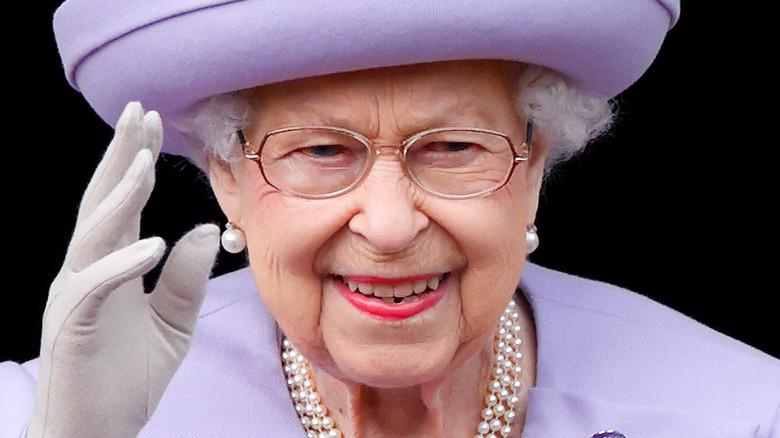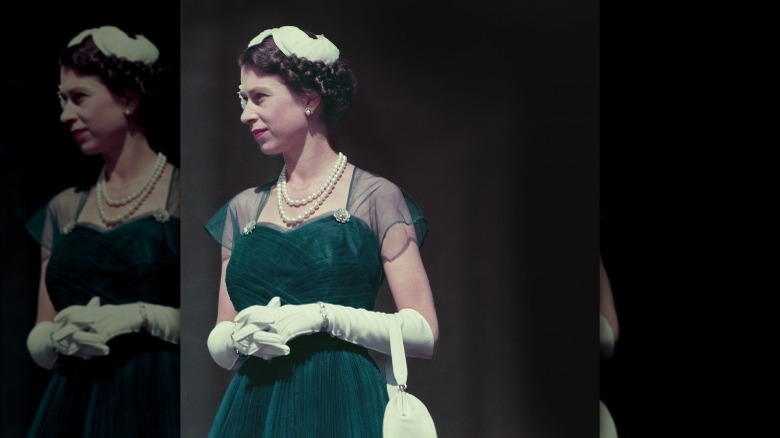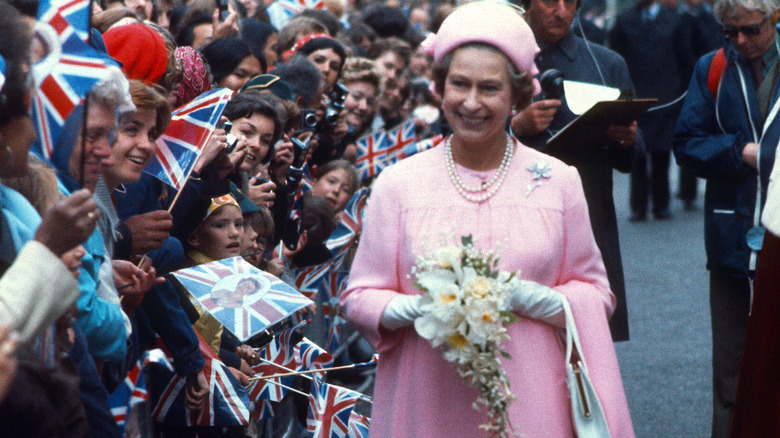The Late Queen Elizabeth Had An Undeniable Mark On British Fashion
Queen Elizabeth II will be forever remembered for her numerous achievements as England's longest-reigning monarch, and her contributions to fashion are no exception. The queen's influence on day-to-day life was felt throughout the realm of the U.K. and the Commonwealth for over 70 years. Queen Elizabeth sported quintessential mid-century fashion trends during the first decade of her reign, but she laid the foundations for her signature style by the 1960s.
"Instead of pursuing novelty, she is shown to be solidly herself, in a public role separate to any other form of celebrity, even in our arguably image-absorbed and image-anxious times," Susanna Cordner, archives manager at London College of Fashion, told Women's Wear Daily prior to the queen's passing. Some of the most memorable looks of Queen Elizabeth's include her monochromatic outfits. The monarch was well-known for these resplendent looks, with a sophisticated approach to color coordination from head to toe. Not only did the queen inspire those looking to mimic her royal and refined looks but she also played a role in developing the styles of various counterculture movements. Now, let's discuss how Queen Elizabeth contributed to the enduring landscape of British fashion.
The significance of Queen Elizabeth's style choices in British culture
Queen Elizabeth was a trendsetter from early in her reign, starting with her introduction to the public eye as a princess. Her style choices just before taking the throne tended toward Christian Dior's New Look-inspired silhouettes. The queen's preference for ultra-feminine skirts and dresses depicted in photographs taken during the late 1940s undoubtedly inspired millions of women to follow her lead (via Vogue India). Around this time, Queen Elizabeth was pictured frequently wearing pearl necklaces, an enduring staple in her closet, which solidified them as sought-after symbols of class.
The 1960s established the queen's predilection for bright, color-coordinated outfits. Although partial to solid color pairings, she wasn't shy about wearing bold prints and patterns that defined the era alongside more traditional styles. One design that's stood the test of time is that of Queen Elizabeth's official royal tartan, a multicolored plaid known as the Royal Stewart. The queen was often pictured wearing this royal tartan at events, and the royal family is credited with popularizing tartan in Scottish culture (via The Telegraph).
The Scottish Register of Tartans notes that while the Royal Stewart tartan was initially restricted for royal use only, it's become difficult to enforce due to its popularity. And as the U.K. entered the 1970s, a curious phenomenon took place that would change the course of British fashion for years to come.
The lasting effect Queen Elizabeth had on counterculture fashion movements
Scottish teen sensations The Bay City Rollers were the first artists to adopt tartans like the Royal Stewart pattern and similar incarnations in their stage costumes during the early 1970s, leading to the place of plaids in punk garb. "Malcolm McLaren, the man behind the Sex Pistols, and the designer Vivienne Westwood have [both] said they were influenced by the Bay City Rollers," explained the late Bay City Rollers frontman Les McKeown to The Sun U.K..
Ironically, the Sex Pistols, who were closely associated with McLaren and Westwood, were often seen wearing tartan creations when they shot to fame with the single "God Save the Queen," a piece that highlighted youth culture's nihilism toward monarchy during the queen's Silver Jubilee (via NPR). Through this domino-effect sequence of events, it became clear that Queen Elizabeth could have added "singlehandedly inspired the fashions of countless subcultures" to her list of achievements.


